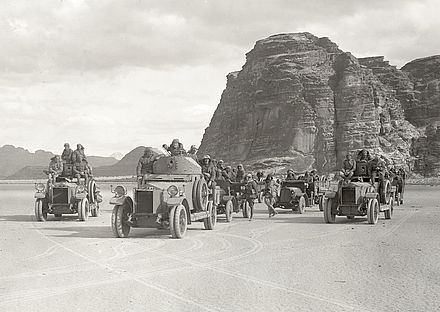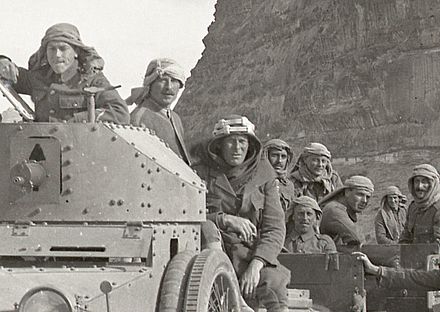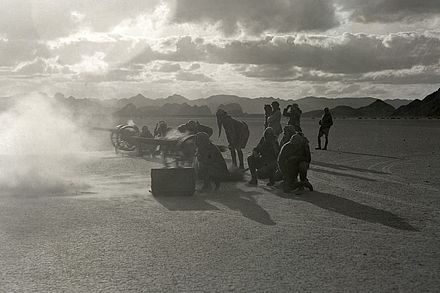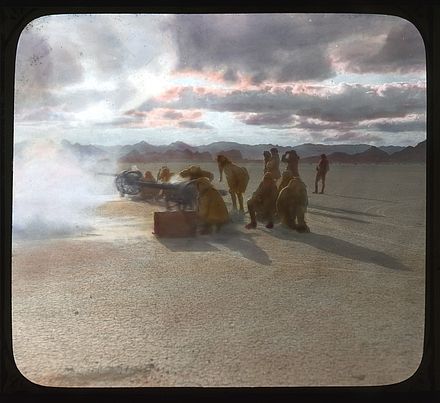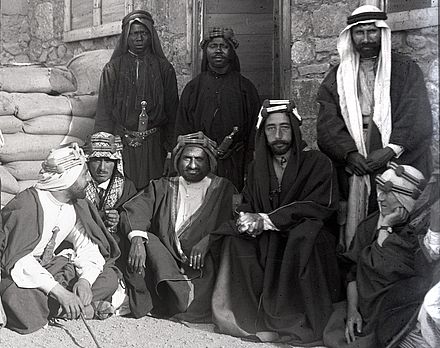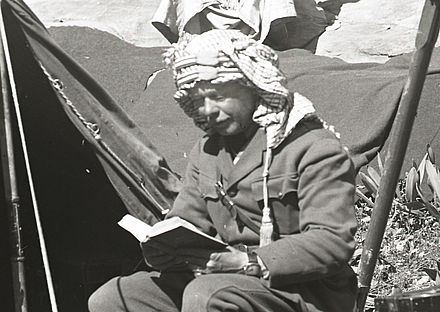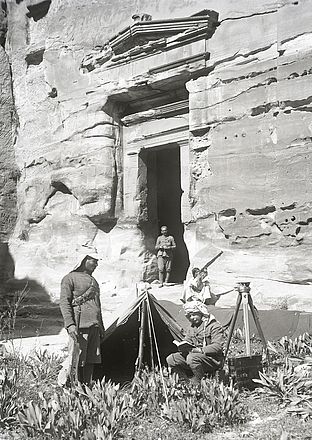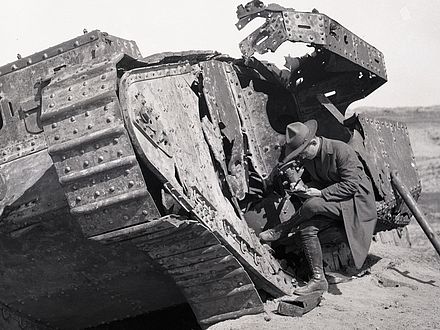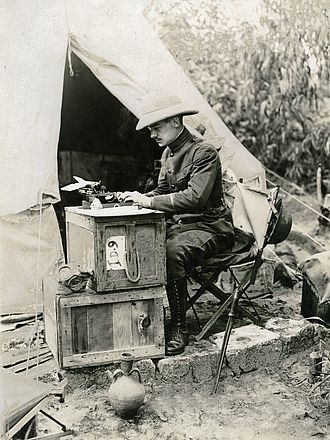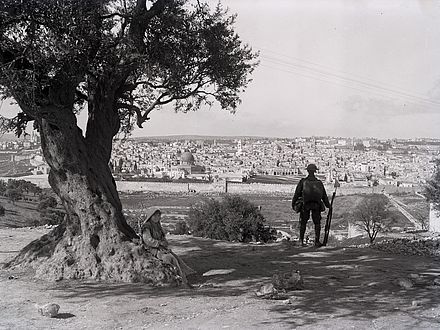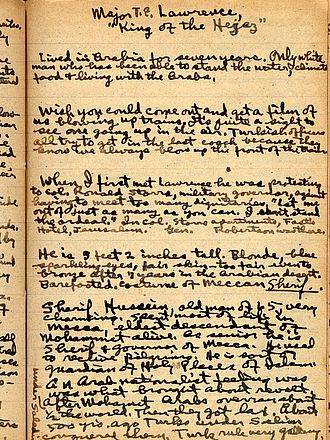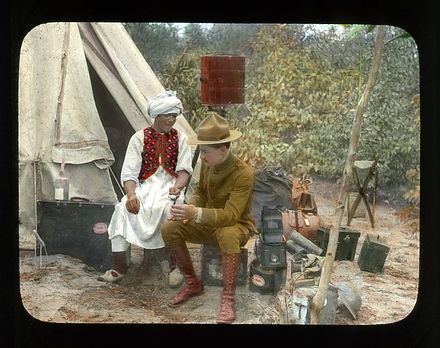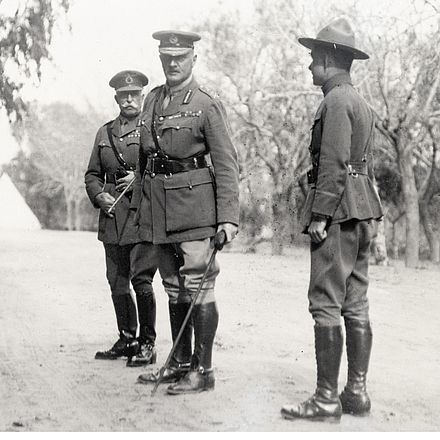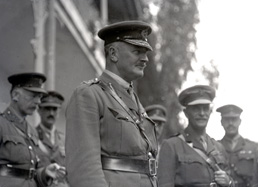Destination: Middle East
At the age of 25, Thomas had hired a cameraman, Harry Chase, and set off for the Middle East during World War I under the auspices of the U.S. War Department. He was a propagandist, tasked to bring home footage that would win more American support for the war effort.
The goals of the trip and its organization actually resemble how a television news producer today would proceed to cover a foreign war, except for the travel time. What can be produced in days today, took months. Any story done in Europe, much less the Middle East, meant a tremendous amount of time for logistics. Consider this is years before there was radio transmission (much less broadcast), transatlantic phones or airlines. Long-distance travel was by steamship or train, information was telegraphed or hand carried and there were no sound recordings. And finding Lawrence and taking his story down in notes, capturing him on film and glass plates was only the beginning. Thomas still had to bring these materials back and find a way to present this story to people. That would take years.
Thomas arrived in the Middle East shortly after Britain’s triumphant entry into Jerusalem, where in short order he stumbled upon then Major T.E. Lawrence. Thomas was fascinated by this British officer who went barefoot in the ancient city and wore the white silk thawb (robe) of a Prince of Mecca. Thomas’ “Palestine Journal” summarizes extensive interviews that he had in the holy city with Lawrence over the next week. These entries establish the fact that Thomas saw him on more then one occasion and quote Lawrence as saying, “Wish you could come out and get a film of us.”
His instincts alerted, Thomas knew he needed to follow Lawrence to his forward base in the port of Akaba. In his autobiography Thomas explains, “Saying nothing at the time, I decided, Chase and I would join him … my every instinct told me I must not miss the chance to be the first to tell the world his story.” He may have sensed a story, but where Lawrence could come and go by slipping through Turkish lines in the desert, Thomas, his cameraman and nearly a ton of gear would have to go around enemy lines through the Suez Canal and up the Gulf of Akaba by military steamship.
Audio
Clip 9
Lowell Thomas on how he managed to visit Lawrence in Akaba.
Demonstrating the formality of the era, Thomas’ “Egyptian Journal” details how, a few weeks later, Thomas found himself invited to lunch with General Allenby, the Commanding British General of the Near East. He brought up Major Lawrence and came away with permission and the Army’s assistance in visiting Lawrence at his base in Akaba.
“I first talked the matter over with General Allenby when I took lunch last week with him and the Duke of Connaught on the Palestine Front. He passed me on, for further arrangements, to Gen. Clayton and he in turn wrote a letter for me to hand to Lt. Col. Dawney, Chief of the Arab Bureau in Cairo.”
—Lowell Thomas, “Egyptian Journal”


